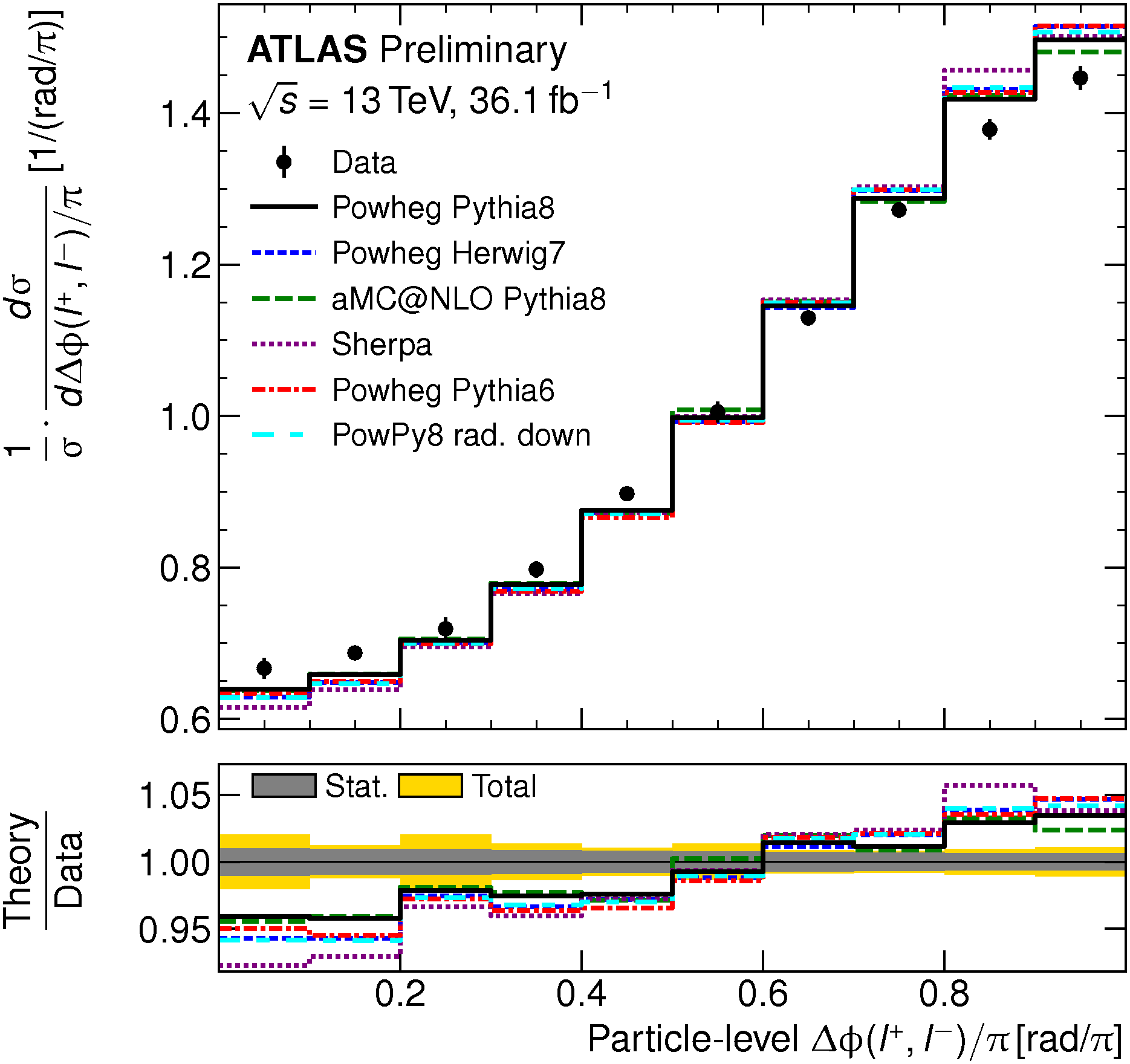Precision leads to puzzles
6 July 2018 | By

The top quark is a unique particle due to its phenomenally high mass. It decays in less than 10-24 seconds, that is, before it had time to interact with any other particles. Therefore many of its quantum numbers, such as its spin, are transferred to its decay particles. When created in matter-antimatter pairs, the spins of the top quark and the antitop quark are expected to be correlated to some degree.
By measuring the angles between the top and antitop decay particles, ATLAS has not only measured this degree of correlation, but found it to be higher than what is predicted by calculations based on the Standard Model.
A long standing mystery
This is not the first time that LHC experiments have probed spin correlation in top events. Both ATLAS and CMS have previously published measurements using the same observable and also found the spin correlation to be higher than expected, but at the time did not have sufficient precision to make a statement. This new result has significantly reduced uncertainty due to a much better understanding of the detector and the vast amount of data now available at the LHC.
So what could it be? What could make top quarks spin together more than they should?

New physics or poor modelling?
So what could it be? What could make top quarks spin together more than they should? There are a number of possibilities. The first is that our understanding of quantum chromodynamics simply isn’t sufficient to describe data at this precision. ATLAS has investigated this possibility thoroughly and, at the moment, nothing obvious stands out as a culprit. Indeed, since both ATLAS and CMS have seen this effect multiple times in different datasets and using different simulations, it seems unlikely to be a simple modelling issue but perhaps something more fundamental in our understanding. The possibility of a lack of understanding of the detector has also been ruled-out. Could this be something new?
The road ahead
The data on which this result is based is only a fraction of what is available to us and now the community as a whole must scrutinise this result as ATLAS prepares to investigate even more data. One thing is certain: tops appear to be spinning together more than they should. The question is, why?
Links:
- ICHEP2018 presentation by Yvonne Peters: Top quark properties measurements with the ATLAS detector
- Measurements of top-quark pair spin correlations in the eμ channel at 13 TeV using proton-proton collisions in the ATLAS detector (ATLAS-CONF-2018-027)
- Measurement of Spin Correlation in Top-Antitop Quark Events and Search for Top Squark Pair Production in proton-proton Collisions at 8 TeV Using the ATLAS Detector (Phys. Rev. Lett. 114, 142001 (2015))
- CMS Collaboration: Measurements of t¯t spin correlations and top quark polarization using dilepton final states in proton-proton collisions at 8 TeV (Phys. Rev. D 93, 052007 (2016))
- See also the full lists of ATLAS Conference Notes and ATLAS Physics Papers.



